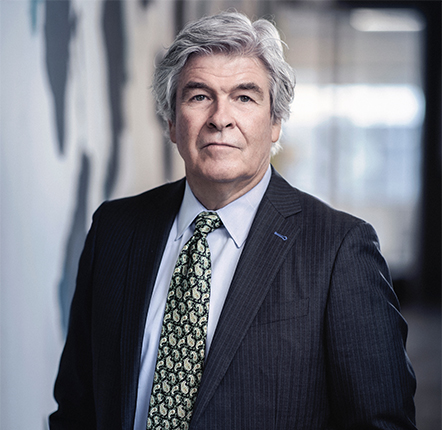How Does a Lawyer Collect Evidence in a Sexual Abuse Case?
 Evidence plays a vital role in proving claims of sexual abuse and assault. Regardless of whether you plan on pressing criminal charges or filing a civil claim related to sexual abuse, it’s crucial that you and your legal team invest heavily in gathering compelling evidence to support your case.
Evidence plays a vital role in proving claims of sexual abuse and assault. Regardless of whether you plan on pressing criminal charges or filing a civil claim related to sexual abuse, it’s crucial that you and your legal team invest heavily in gathering compelling evidence to support your case.
Despite the fact that roughly 88% of all women in California report experiencing sexual harassment or abuse in their lifetimes, many survivors are unsure of what is required of them in the event that they choose to report a sex crime. Here’s a brief overview of some of the crucial forms of evidence involved in sexual abuse cases, as well as an explanation of how experienced sexual abuse attorneys collect and leverage evidence for successful case outcomes.
What counts as evidence in a sexual abuse case?
Because many forms of sexual abuse and assault happen behind closed doors, criminal and civil courts often rely on supporting evidence to help them make determinations of guilt and fault in these cases. Here are some of the kinds of evidence commonly sought in sexual abuse cases:
Physical evidence
Physical evidence is a particularly persuasive form of proof that legal teams tend to zero in on fairly quickly while investigating a case. Some common examples of physical evidence used in sexual abuse cases include:
- Findings from medical examinations, like sexual assault forensic exams
- Clothing, bedding, or other objects that show signs of bodily fluids or contain samples of DNA
- Photographic evidence of injuries like bruises or cuts
- Items retrieved from the scene of the crime, like bindings or restraints
- Signs of property damage that might support claims of forced entry
While physical evidence can be particularly compelling in a contested claim of sexual abuse, it’s important that lawyers and investigators collect these pieces of evidence quickly and handle them carefully in order to preserve the chain of custody and stave off claims of evidence tampering.
Medical records
Medical documentation can also prove vital when it comes to backing up a survivor’s claims. Attorneys can use hospital records, lab results, therapy notes, and other healthcare records to add veracity to their client’s claims and shine light on the ongoing impact of their client’s trauma.
In addition to backing up a victim’s claims, these records can also play a major role in a civil sexual abuse case, as many survivors attempt to pursue reimbursement for medical and therapy expenses. All in all, medical records paint a clear picture of how a survivor has been affected by the harm they endured and can serve as the foundation of a civil claim for compensation.
Digital evidence
Digital evidence has become an increasingly crucial component of many contemporary cases. Given the extent to which many of our lives revolve around technology, it stands to reason that devices and data can often provide a wealth of useful information in a sexual abuse case. Text/call logs, GPS and location information, web browsing histories, and digital images and videos can all support a survivor’s testimony and provide additional context to law enforcement, prosecutors, or the jury in a court case.
Witness testimony
You’ve probably heard people throw around the phrase “he said, she said” with respect to sexual abuse cases. While this saying is often weaponized against survivors, there is some truth to the idea that many cases come down to conflicting accounts and witness statements. Some survivors testify to the abuse they endured in various court proceedings, but additional testimony is often used to corroborate the survivor’s version of events.
Even if no one was around to directly witness the abuse as it occurred, sometimes the prosecution will call upon other witnesses who can speak to the impact of the survivor’s abuse on other aspects of their life. Friends, teachers, therapists, coworkers, and medical professionals can all offer valuable perspectives and help paint a clearer picture of the abuse and its fallout.
How is evidence collected?
In civil sexual abuse cases, attorneys collect most of the evidence. Once an action is pending, lawyers may issue subpoenas for evidence like phone records, employment logs, surveillance footage, or other documentation to strengthen their case and corroborate their client’s testimony.
Lawyers can also send preservation letters to individuals or institutions currently in possession of their desired evidence. These letters essentially ask that none of the desired evidence be deleted, overwritten, or tampered with in any way. Preservation letters can be issued to protect pretty much any type of evidence, but they may be especially valuable for cases that rely on digital evidence. That’s because digital files can easily be corrupted or destroyed with just the click of a button. The sooner an attorney can send a preservation letter, the better the odds that the evidence will be preserved for use in the case.
The bulk of the evidence employed in a criminal sexual abuse case is identified, gathered, and preserved by law enforcement. Crime scene investigators and forensics experts often play a central role in ensuring evidence is collected safely and maintained in accordance with the law. However, additional forms of evidence are sometimes brought to light by legal professionals down the line.
What happens next
After gathering all the evidence in a civil case, attorneys from both sides will typically share and exchange requested information with one another in what is known as the discovery process. Discovery is an important phase of any case because it ensures both sides are fully “in the know” about the evidence that will be presented in court. Lawyers use all the evidence they collect to build a cohesive and comprehensive narrative of what they believe likely occurred in a case so they can present a compelling account to the judge or jury responsible for deciding the outcome.
Ideally, you want to work with an attorney who understands the sensitive nature of sexual abuse cases so you don’t find yourself re-traumatized by the legal process. It can be hard to sit in court and be exposed and re-exposed to potentially triggering images, recordings, or testimony, but your lawyer is there to fight for you and your well-being. Experienced sexual abuse attorneys know exactly how difficult this can be for survivors and their loved ones, and the right lawyer will help you make decisions that safeguard your mental health throughout the entirety of your case.
Final thoughts
Sexual abuse cases pose a variety of challenges for survivors, investigators, and attorneys, but it is possible to move through the legal process with ease and confidence if you have the right support. From the earliest stages of evidence gathering to the final moments of a trial, your attorney is there to fight for you. Armed with ample evidence and resounding empathy, a sexual abuse attorney can help you find your voice and hold your abuser accountable.
At Taylor & Ring, we believe that a clear and comprehensive legal strategy is the cornerstone of any successful sexual abuse case. Evidence plays a central role in that strategy, and our team is committed to gathering and reviewing any and all evidence we think might support our clients’ fights for justice. With over 200 jury trials under our belts, we have the knowledge and experience it takes to build compelling cases while helping our clients feel heard.
If you or someone you love has experienced sexual abuse or molestation, give us a call today or fill out our online contact form to schedule a confidential consultation with a member of our team. We are standing by to learn more about how we can support you from day one.

John C. Taylor is one of the most accomplished and nationally recognized trial lawyers in California. The broad variety of cases he has tried during his career is matched by few attorneys, trying more than 125 cases to verdict, including: police shootings and civil rights, sexual abuse, serious personal injury, wrongful death, products liability, insurance bad faith, and employment.
Read more about John C. Taylor.

